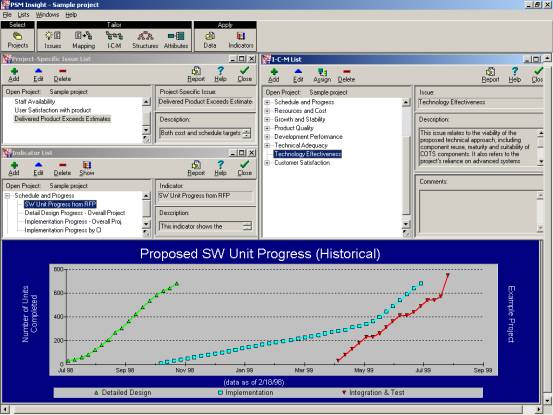|
|
|
Project Management |
|
Service Overview |
|
Clarity and objectivity The common themes running through Analytical Decisions' approach to project management are clarity and objectivity: clarity in setting goals and objectivity in measuring results. We strongly believe in the value of goal-directed project management. Too often programme plans are created with an emphasis on the activities rather than the objectives. This can lead to important streams of work being overlooked, while others are over-emphasised. In contrast, our approach focuses on the required goals. It also recognises that technology-oriented projects, to be successful, usually need to address not only the system aspects, but also the people and processes. The Analytical Decisions method seeks to identify and balance these complementary work streams. Establishing a project or programme plan is, of course, not enough. Progress, costs and risks have to be actively managed. While project management cannot be reduced to a mechanical activity, use of appropriate tools greatly assists the project manager achieve an overview of the project and so concentrate on key issues. PSM is a sensible, pragmatic methodology, coupled with data/metrics-based perspective. "Without the right information, you're just another person with an opinion." Using PSM
(Practical Software and Systems Measurement) we are able to offer you a
coherent and comprehensive method (and supporting software tool) for managing
costs, risks and progress. A screen shot of the PSM Insight tool illustrates
the approach:
The heart of the approach is I-C-M (issue, category, measurement). The initial step is to identify issues (eg "Schedule and Progress") that need to be managed in the project. A pre-defined list is available for generic use, but this can be tailored for the specific project. Under each issue heading there are one or more categories. In the case of "Schedule and Progress" the generic categories are: "Milestone Performance" and "Work Unit Progress". These categories group together related measurements. The measurements themselves represent the data that is to be collected (eg milestones planned, achieved, etc). Having established a link from issues through to measurements reports and indicators can be readily produced to give a well-rounded, objective view of the status of the project. |
